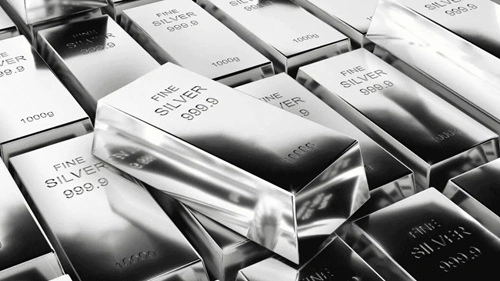Silver holds a special place in the Indians’ hearts, where it has shaped the country through ancient ornaments and currency to today’s electronics and solar industries. Over the years, silver production has grown gradually with technological upgrades, new explorations, and the expansion of existing mines across the country.
However, India’s silver mining industry is not the primary focus like it is in Mexico or Peru. Rather, silver is a by-product of lead, zinc, and copper mining. As per data from the Ministry of Mines and the Indian Bureau of Mines, the total national silver output in recent years has spiked to 75 to 80 tonnes per year. Most of the silver extracted in India mainly comes from the western and southern parts of the country.
Here, we will dive deep and learn about the top 5 highest silver-producing states in India in 2025, with information taken from the Ministry of Mines, IBM, and news sources.

1. Rajasthan – 43 Tonnes
As per the 2025 estimates, Rajasthan leads in the silver production with 43 tonnes of production in 2025. Rajasthan alone accounts for 55-60% of the country’s total output due to its mineral-rich belt. In these mineral belts, there are lead, zinc, and copper mines. The notable areas with the highest-yielding mines are Udaipur, Rajsamand, Bhilwara, and Chittorgarh.
The silver in Rajasthan comes as a by-product of lead and zinc smelting from the operation of Hindustan Zinc Limited. The mines are in Zawar, Rampura Agucha, and Sindesar Khurd. The high-grade ore and advanced extraction technology have doubled the total production in the last decade alone.
2. Andhra Pradesh – 10 Tonnes
Andhra Pradesh holds the second position with silver production, as it produces 10 tonnes annually, which is about 15% of the total national silver output. Similar to Rajasthan, the silver output comes as a by-product of lead, zinc, and copper mining in this mineral-rich state. The regions with the highest silver in Andhra Pradesh are Anantapur, Kadapa, and Kurnool.
With the diversified mineral base, it also produces gold, barite, and limestone on a large scale. There are both public and private sectors operating to engage in polymetallic mining.
3. Telangana – 6 Tonnes
Telangana is another key silver-producing state, generating around 6 tonnes annually. Like Andhra Pradesh, the state’s silver is primarily obtained as a by-product from its lead and zinc operations, along with small copper mines.
The Adilabad and Nalgonda districts are central to this activity. The mineral wealth in Telangana initially developed when both Andhra Pradesh and Telangana were undivided. But, post formation, this state has invested heavily in mineral exploration to boost its productivity and refining capacity. As the mining practices are improving, Telangana is expected to retain the position or improve its extraction capacity with time.
4. Haryana – 4.5 Tonnes
With the refining and recycling operations, Haryana also plays a key role in India’s silver production industry. Haryana’s 2025 estimate for silver extraction is between 4 and 5 tonnes, which is supported by the modern refining infrastructure.
The key districts like Faridabad and Panipat account for the most production in this state. The key source of silver production in Haryana is from the processing of imported concentrates, scrap recycling, and refining by the private companies. The major challenge with raw material imports and recycling waste management remains a big hurdle in the current times.
5. Jharkhand – 3.5 Tonnes
Jharkhand holds the fifth position in silver production with its 3.5 tonnes of production estimates. Silver in Jharkhand is mined as a by-product of copper and lead extraction, which mainly comes from the regions like Singhbhum, Ranchi, and East Bokaro.
The state is home to some of the oldest mining operations in India, with large copper reserves that indirectly yield silver. The Hindustan Copper Limited (HCL) facilities in Jharkhand also recover trace amounts of silver during metal smelting and refining.
Bottom Line
These five states account for almost 90% of silver production in the country. The silver output is increasing gradually with improved technology, but the demand is also rising for the solar energy sector, electric vehicles, and electronics manufacturing. The domestic production plays an important role in reducing imports and sustaining the industry.